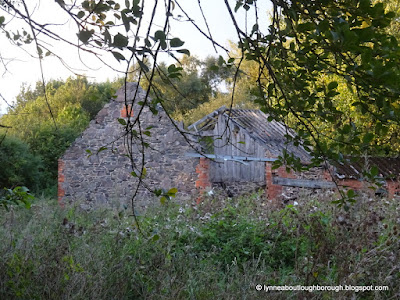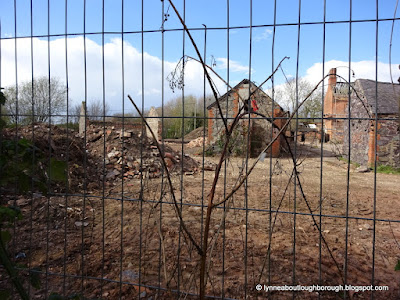Probably the best known wax museum in the UK is Madame Tussauds. It was in 1802 that Madame Tussaud first brought her travelling exhibition to the UK, and in 1835 set up a more permanent display at ‘The Baker Street Bazaar’. Eventually, in 1884, thirty-four years after her death, the waxworks museum we know today was set up.
Wax museums and exhibitions, as well as animal menageries became popular, and various of these toured the country. One such was Hyltons. In 1851, Mr Edward Hylton was advertising his travelling show as a ‘Grand Imperial Museum of Magnificent Moving Figures, as large and as natural as life’ and brilliantly illuminated with gas, ahead of his visit to Newbury in May that year.
In June 1851, the show visited Marlborough, and we learn that the residents were pleased with their view of what was described as ‘Hylton’s Panorama’, considering it instructive and amusing, particularly to young people, presenting nothing to offend, and everything to awaken and instruct. Hylton also had a brass band, and this was loaned out to the members of the Marlborough Branch of the Wiltshire Friendly Society, to accompany their annual festival.
October 1851 was a busy month for Hyltons, and they could be visited at the Nottingham Goose fair; the Hylton brass band played at Barnstaple, and the ‘Museum of Wax figures’ comprising, amongst other things, models of interesting objects, and a panorama of the Crystal Palace, was on show in Queen Street, Exeter, and was, apparently, skilfully executed.
1852 was no less quiet! During the period between Christmas and New Year 1852, Hylton’s ‘wild beast’ show delighted audiences at North Shields, and in May, ‘Hylton’s Exhibition of Wax Figures’ was on view for several days at Shepton Mallett, having narrowly escaped complete destruction when a fire took hold, after a naptha lamp was overfilled.
In September, Hyltons were at the Ashby-de-la-Zouch statutes fair for about four days, and had lots of visitors, and the Hylton brass band attracted large crowds. In October, Hyltons attended the Goose Fair in Nottingham with the wax work collection, alongside Howie’s ‘museum of wax figures’, Batty’s menagerie, and Winroe’s mechanical exhibition.
Later in October 1852, Hylton’s attended the Mansfield pleasure fair that was part of the cheese fair. The amusements consisted of wax figures, four views of Crystal Palace, a chamber of horrors, and three young cubs. Moving swiftly north, Hylton’s ‘National Menagerie’ was busy with visitors when it exhibited at the Saturday market in Beverley, Yorkshire. However, its outing to Brigg in Lincolnshire seemed somewhat less popular, staying for only one day, and being less busy than hoped for, despite the band giving a good performance of several of the most popular pieces of the day.
In the coming years, Hyltons unique collection of wax figures visited Dundee, where the ingenious mechanisms employed seemed to make the figures move. These figures represented people like the Duke of Wellington, the Emperor of Russia, the Sultan of Turkey, and others. By the time the 1854 exhibition reached Nottingham in December of that year, it was advertised as ‘Hylton’s Animated Wax Work’. In December 1857, Hylton’s wax work exhibition made an appearance in The Square at Chepstow, as part of the Chepstow Farmers’ Club Annual Cattle, Poultry, and Crop Show, and Hylton’s brass band enlivened the proceedings by playing some popular pieces.
At the end of December 1857, the moving wax work figures travelled to Cheltenham, where it was sited in the ground behind the market. Some of the models represented Queen Victoria, the Duchess of Kent, the Duke of Wellington, the Maid of Saragossa, and Don Carlos. All was accompanied by the brass band. The admission prices were:
One shilling for ladies and gentlemen;
6d for tradespeople;
3d each for the working classes and their children.
Children from the workhouse were admitted free of charge, and those belonging to charity schools were half-price, while children from other schools were admitted on ‘reasonable terms’.
The events were open daily from 2-5pm, and 6 to 10pm. During the hours
of 2-4pm, private viewings of the exhibition cost 1s each.
In July 1858, Hylton’s Wax Exhibition is advertised for sale by public auction in Moore Street, Birmingham. In all, there were five lots.
Lot 1 was a caravan containing Androcles and the lion; King of Delhi and two Sons; six views with glasses.
Lot 2 was a stage carriage with complete decorations; two figures front inside; Nana Sahib; Captain Rogers; Group of Duke of Wellington and Attendants.
Lot 3 was a caravan containing 24 figures, representing the death of General Zumelncarraguay, a Spanish Chieftan.
Lot 4 was a caravan containing 19 figures, representing the Maid of Saragossa Defeating Napoleon’s Army; also views with eight glasses
Lot 5 was a caravan containing 21 figures, representing the Council Chamber of Constantinople, including the Sultan of Turkey.
All the carriages were in good condition. The figures were all worked by machinery. Four of the caravans were 20 feet long, and 8 feet wide, while the stage carriage was 16 feet long by 8 feet wide.
The reason
for this sale was because Edward Hylton had died the previous year, in fact on
21 August 1857. Probate, which stated that he was formerly a cooper of the City
of Lincoln, but most recently was a travelling exhibitor and proprietor of
model wax figures, was granted on 21 June 1858 to his wife, Maria.
But, what has all this to do with Loughborough?
Towards the end of September 1852, after visiting Ashby, and before visiting Nottingham, Hylton brought his wax models to Loughborough, and exhibited them at was then the Cross Keys Inn, now the Phantom, on High Street. This must have been a difficult and sad time for Edward and Maria, as their 17-year-old daughter, Sarah took ill, and they left her at the Cross Keys to recover, the landlord of which was Mr Dougherty, while they proceeded on to Nottingham Goose Fair. Sadly, despite receiving medical attention from a nurse and an attendant, Sarah died.
 |
| The Phantom pub, formerly the Cross Keys Inn, High Street |
The funeral took place a couple of days later, and the coffin was borne to the grave by six residents of the town, while six females town residents, supported the pall. Amongst the mourners were Edward, Maria, and their son, Joseph. Their grief was indescribable, and of the several thousand spectators who were there, many were moved to tears. The Hylton brass band returned from Nottingham and, wearing mourning dress, hatbands and black gloves, they led the procession from the Cross Keys to Emmanuel Church, playing the Old Hundredth psalm. Reverend Bunch conducted the moving burial service and this was followed by the band performing the music to Pope’s Ode to the Soul. What a sad experience: perhaps Edward never fully recovered from the loss of his daughter.
 |
| Emmanuel Church |
Curiously, on census returns and other documents, the surname of the family is sometimes spelled Hylton, and sometimes Hilton, but daughter Sarah is always recorded as Susan.
You are welcome to quote passages from any of my posts, with appropriate credit. The correct citation for this looks as follows:
Lynne










































